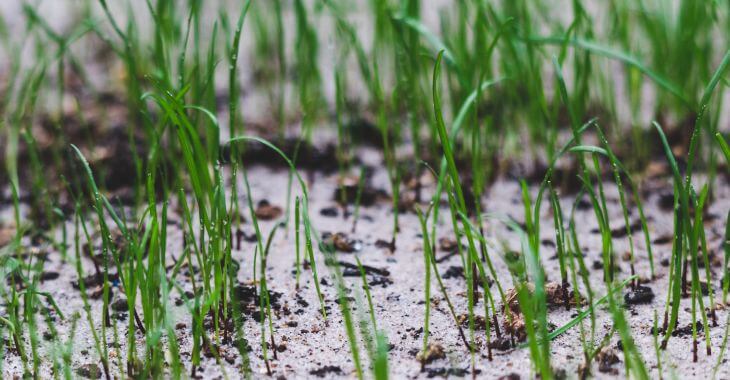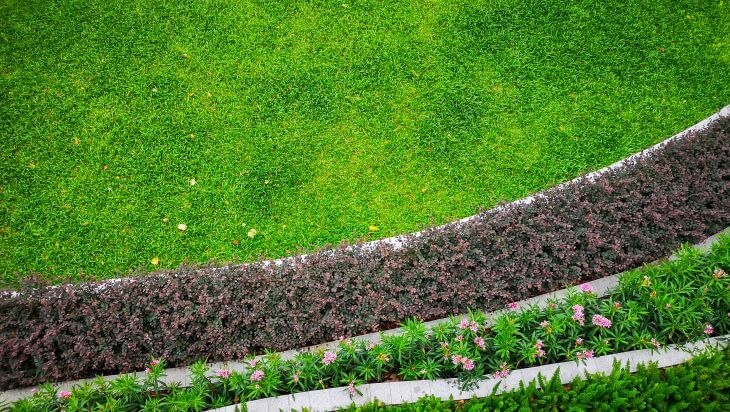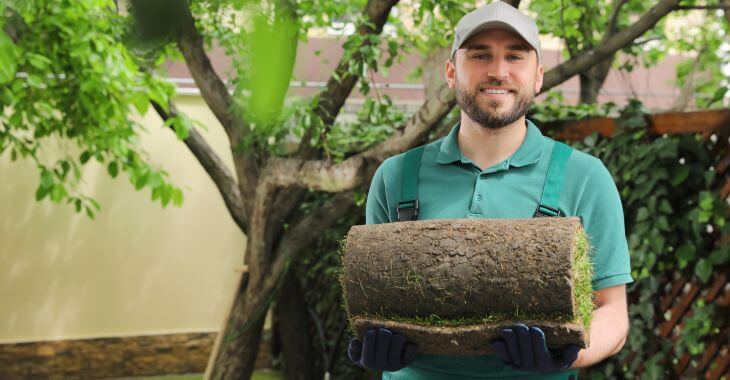What Is the Best Grass for Sandy Soil?

There are many elements that impact the ability to grow a healthy, thick lawn. Choosing the right grass type is among those elements, but finding the best grass depends on your climate, shade/sun ratio, soil composition and more. If you have sandy soil, you need a grass that will grow well in this environment, as well as within your geographical region. Here are some factors to determine the best grass for a sandy soil yard where you live.
How Does Sandy Soil Affect Grass?
Sandy soil can be difficult for growing and maintaining a healthy lawn for several reasons. Sandy soil tends to be low in nutrients that are needed to feed and nourish your lawn. Plus, the consistency of the soil does not trap moisture; grass must be able to survive drought conditions due to limited access to adequate water supplies during the dry months.
If you have sandy soil and want to grow a thick, healthy lawn, you need the best grass for sandy soil in your region. Grasses that are drought-resistant and that can grow deep roots are the best suited for this type of soil. The type of grass will depend on where you live and whether you need a warm or cold-season grass.
Warm-Season Grasses for Sandy Soil
If you live in a warm climate with mild winters, you want a warm-season grass that is drought-resistant. Luckily, there are a few different warm-season grasses that perform well in sandy soil. You can easily maintain a healthy lawn in loose, sandy soil if you keep up an effective watering regimen to encourage deep grass roots. Some of the best grass for sandy soil in warm climates include:
- Zoysia. If you have sandy soil and want low maintenance, zoysia is a great warm-season grass. Unlike some other warm-season grasses, zoysia can tolerate direct sun or shade, making it a well-rounded option for all types of warm climate, sandy-soil lawns.
- Bermuda. The Bermuda grasses will grow great in sandy soil in warm climates, but it does not do well with cold temperatures or shade.
- Bahia. Like Bermuda, Bahia grass does not like wet conditions and grows well in dry, sandy soil. It also does not grow well with cold seasons or in shaded areas.
Any of these warm-season grasses can do well in sandy soil lawns in warm regions like the southeast or southwest with mild winters. Talk to your landscaping professional to determine the best grass type for your specific lawn and maintenance preferences.

Cold-Season Grasses for Sandy Soil
If you live in the northern regions with cold winters, you need a grass that can tolerate both the cold temperatures and sandy soil. There are not as many grasses that can thrive in both those conditions – the best cold-season grass for sandy soil are types of fine fescue. Hard, sheep and creeping red fescue are types of fine fescue that can grow well in cold climates and prefer well-drained soils like those with a high sand composition.
Tips for Maintaining Grass in Sandy Soil
Sandy soil has two drawbacks – low nutrients and no moisture retention. If you choose the best grasses for sandy soil and your region, you will get better results for your lawn. You can also improve the health of your lawn with good maintenance strategies to overcome the low nutrients and moisture concerns that come with sandy soil. Here are some maintenance tips for sandy-soil lawns:
- Use compost. Enhance your sandy soil by adding compost. It is best to have your soil tested to determine what nutrients it needs and what compost would be best. Your landscaper can help you test your soil and choose the right compost to increase the nutrient levels.
- Deep watering. Sandy soil needs deep watering not frequent light watering. Make sure when you water your lawn that moisture is saturating the soil about 6-8 inches deep.
- Infrequent watering. You want to encourage deep root growth for your grass in sandy soil. Infrequent, deep watering is the best plan to grow strong, deep roots. Build up to watering only once a week to maintain healthy, strong grass.
Whether you plant your lawn from seed or plugs, or you have new sod installed on your sandy soil, you need to follow through with the right maintenance plan. Choosing the best grasses for sandy soil in your climate is the first step – keeping up with fertilizing and a proper watering routine is necessary to ensure your lawn flourishes.
Sandy soil can be great for growing a thick, beautiful lawn if you know which grasses thrive in this environment. Get advice from a local landscaping professional to find the best grasses for sandy soil in your region and make sure to keep up with the right maintenance plan to keep your lawn healthy.
